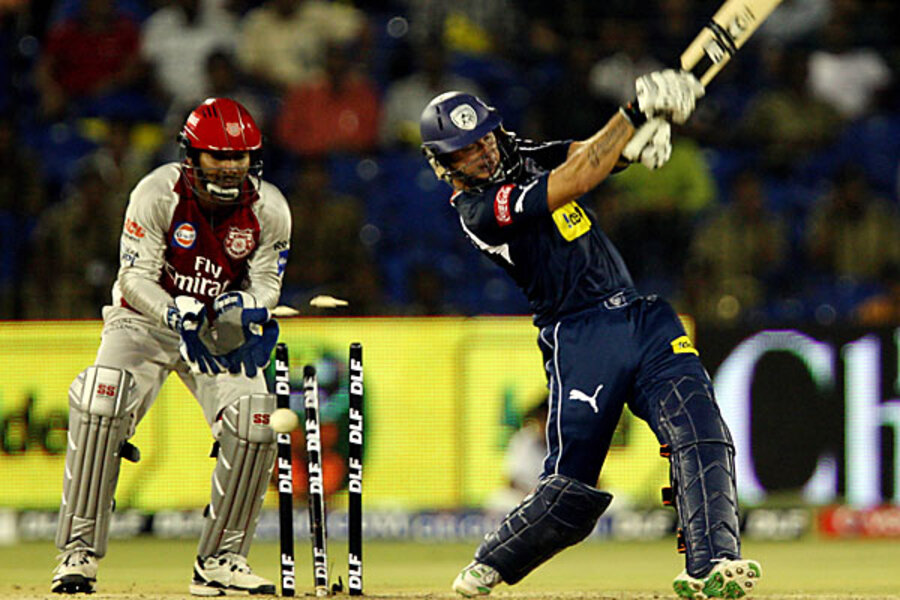Indian March Madness: Cricket
Loading...
If you don't live in India then you probably haven't noticed that one of the World's biggest sporting events started just over a week ago. The Indian Premier League, a Twenty20 cricket competition lasting six weeks is every bit of a national fixation as March Madness is in the US (in fact, to be honest it's bigger), with the 3 hour games achieving ratings which rival the top Indian soap operas. The launch of Bollywood movies is now delayed so as not to clash with the IPL.
The formula is simple- eight franchises representing most of the big cities play 14 games home and away, with the top four going into the play-offs. The $1 billion plus broadcasting contract is enough to attract almost all of the world's top cricketers, and the games are organised with all the razzmatazz of US sports (including cheerleaders) rather than the staid traditions of this ancient game. And it works. The IPL (which is controlled by the governing body of Indian cricket, the BCCI) was launched only two years ago, and they have just sold two new franchises, one for $370 million and the other for $330 million. That places them on a par with the Forbes valuations of the Colorado Rockies and the Cincinnati Reds, or, if you prefer, an average NBA franchise. This is also more than you would have to pay for most European soccer clubs outside of the top ten. Not bad for an upstart.
If you're interested you can watch any of the games for free on Youtube. If you're interested in the economics of sports, you should be watching very closely.
Add/view comments on this post.
------------------------------
The Christian Science Monitor has assembled a diverse group of the best economy-related bloggers out there. Our guest bloggers are not employed or directed by the Monitor and the views expressed are the bloggers' own, as is responsibility for the content of their blogs. To contact us about a blogger, click here. To add or view a comment on a guest blog, please go to the blogger's own site by clicking on the link above.





